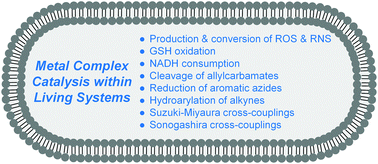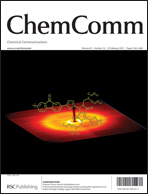This feature article discusses synthetic metal complexes that are capable of catalyzing chemical transformations in living organisms. Photodynamic therapy exemplifies what is probably the most established artificial catalytic process exploited in medicine, namely the photosensitized catalytic generation of cell-damaging singlet oxygen. Different redox catalysts have been designed over the last two decades to target a variety of redox alterations in cancer and other diseases. For example, pentaazamacrocyclic manganese(II) complexes catalyze the dismutation of superoxide to O2 and H2O2in vivo and thus reduce oxidative stress in analogy to the native enzyme superoxide dismutase. Recently, piano-stool ruthenium and iridium complexes were reported to influence cellular redox homeostasis indirectly by catalytic glutathione oxidation and catalytic transfer hydrogenation using the coenzyme NADH, respectively. Over the last few years, significant progress has been made towards the application of non-biological reactions in living systems, ranging from the organoruthenium-catalyzed cleavage of allylcarbamates and a gold-catalyzed intramolecular hydroarylation to palladium-catalyzed Suzuki–Miyaura and Sonogashira cross-couplings within the cytoplasm or on the surface of living cells. The design of bioorthogonal catalyst/substrate pairs, which can passively diffuse into cells, combines the advantages of small molecules with catalysis and promises to provide exciting new tools for future chemical biology studies.

You have access to this article
 Please wait while we load your content...
Something went wrong. Try again?
Please wait while we load your content...
Something went wrong. Try again?


 Please wait while we load your content...
Please wait while we load your content...